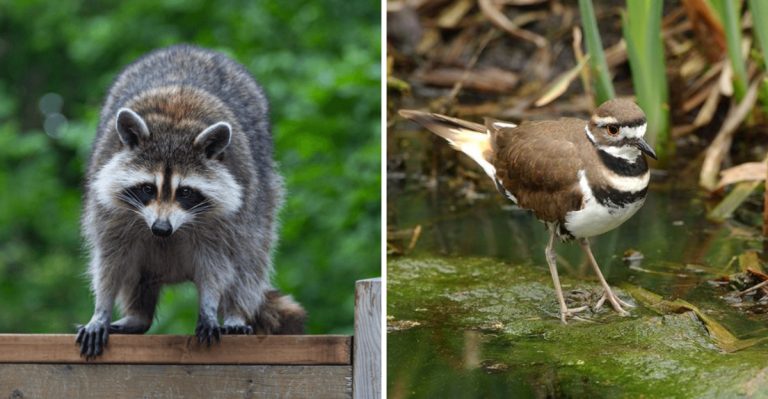Explore The Fascinating Types Of Owls In North America
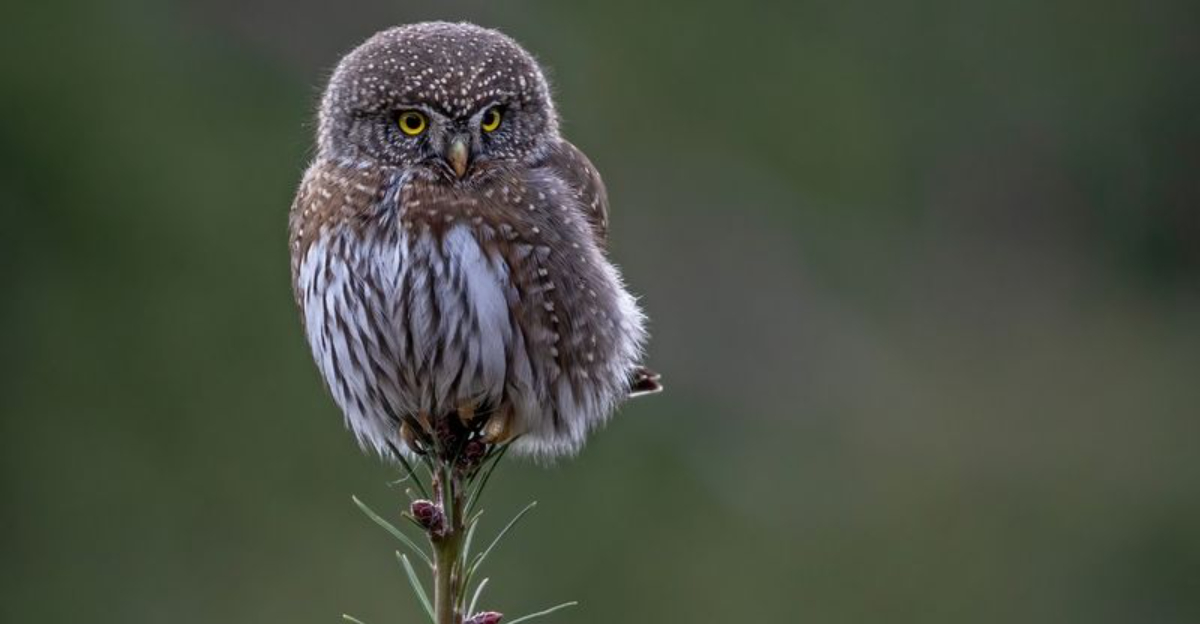
Owls are among the most mysterious and captivating birds in North America, with their silent flight and haunting calls. These nocturnal hunters possess remarkable adaptations like facial discs that funnel sound to their ears and specialized feathers that enable silent flight.
From the tiny Elf Owl to the massive Great Gray Owl, North America is home to a diverse array of these enchanting predators.
1. Great Horned Owl (Bubo Virginianus)
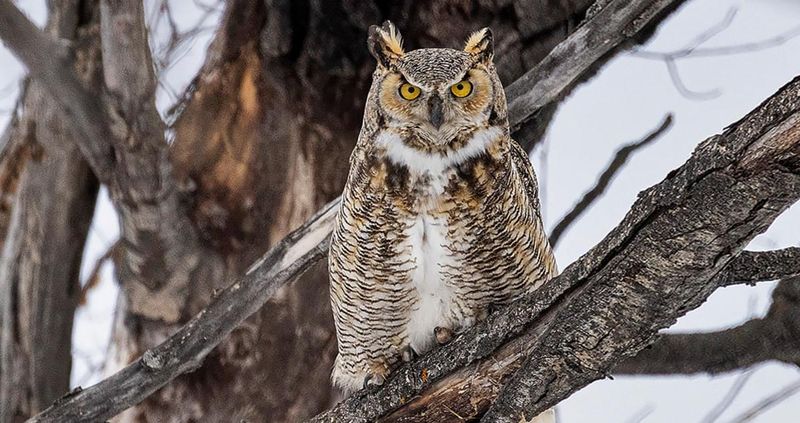
Nicknamed the ‘tiger of the sky,’ these powerful predators are among North America’s most adaptable owls. Their distinctive ear tufts aren’t actually ears but feather clusters that help with camouflage and communication.
Great Horned Owls can rotate their heads 270 degrees and possess talons with crushing power of up to 500 pounds per square inch. Their deep, resonant hooting echoes through forests, deserts, and even city parks.
2. Snowy Owl (Bubo Scandiacus)
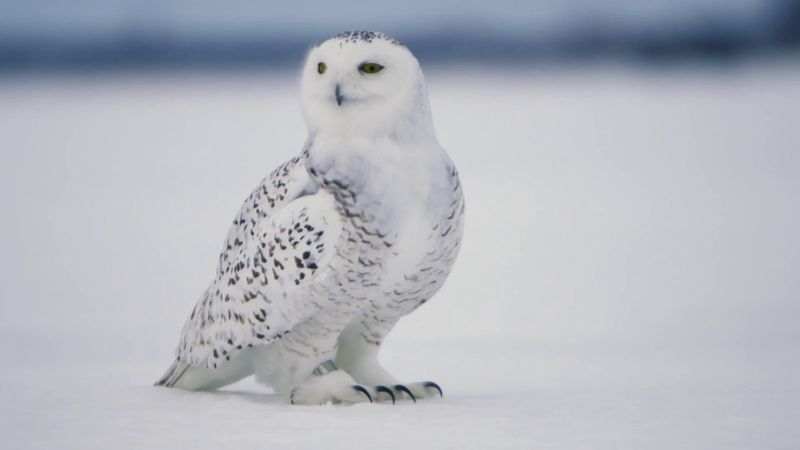
Arctic royalty visiting the lower states, Snowy Owls create excitement whenever they appear during winter migrations. Unlike most owls, these magnificent birds hunt during daylight hours, their brilliant white plumage helping them blend with snowy landscapes.
Males become increasingly white with age, while females retain some dark barring. Their thick feathering extends to their toes, providing insulation against brutal Arctic temperatures that can plunge to -50°F.
3. Barred Owl (Strix Varia)
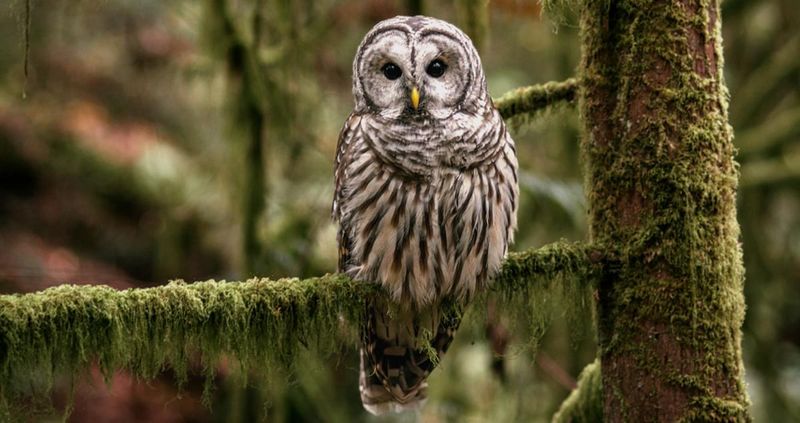
Masters of vocal performance, Barred Owls are famous for their distinctive ‘who-cooks-for-you, who-cooks-for-you-all’ call that resonates through eastern forests. Their soulful dark eyes set them apart from most North American owls, which typically have yellow eyes.
Barred Owls form long-term pair bonds and may remain in the same territory for years. They’ve been expanding their range westward, creating conservation concerns as they compete with the threatened Spotted Owl.
4. Barn Owl (Tyto Alba)
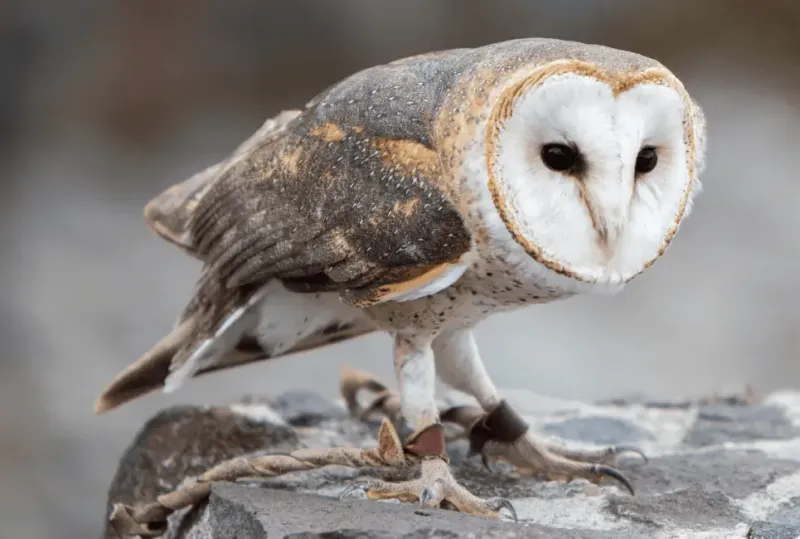
Ghost-like in appearance, Barn Owls glide silently through the darkness with their distinctive heart-shaped face directing sound to their asymmetrically placed ears. This unusual arrangement allows them to pinpoint prey location with extraordinary precision, even in complete darkness.
A single Barn Owl family can consume over 1,000 rodents annually, making them valuable allies for farmers. Their eerie screeching calls have contributed to their association with haunted places in folklore around the world.
5. Great Gray Owl (Strix Nebulosa)
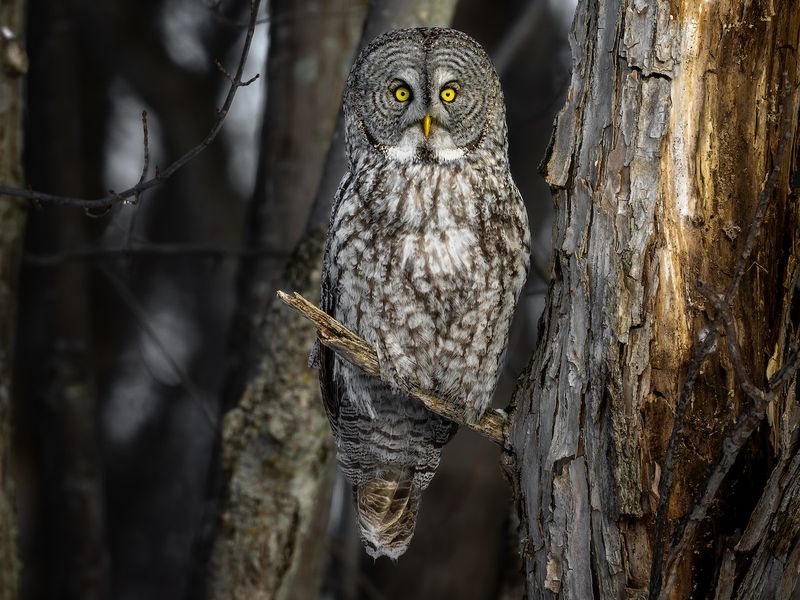
Majestic forest phantoms, Great Gray Owls appear massive but are mostly fluff – their actual body size is smaller than a Great Horned Owl’s. Their enormous facial disc acts like a satellite dish, collecting sound waves that guide them to prey hidden beneath up to two feet of snow.
These northern hunters can detect voles moving under snow by sound alone, then plunge feet-first through the crusty surface. Despite their size, they primarily hunt tiny mammals, rarely targeting anything larger than a rabbit.
6. Long-Eared Owl (Asio Otus)
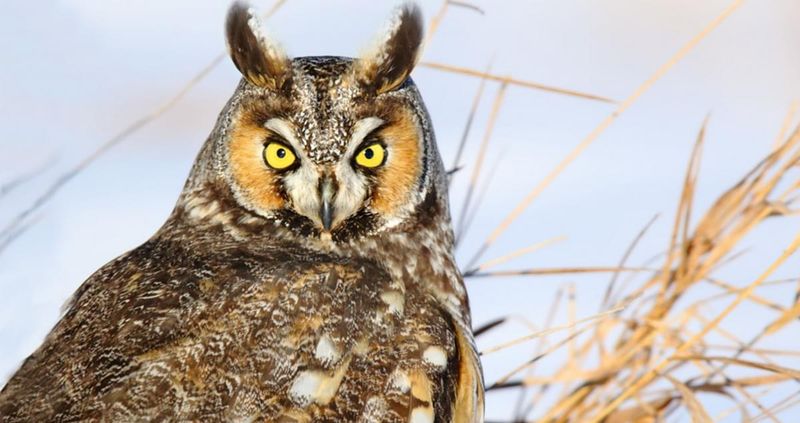
Secret forest dwellers, Long-eared Owls are masters of disguise with their bark-colored plumage and vertical posture that mimics broken branches. Their prominent ear tufts have nothing to do with hearing but serve as visual signals between owls.
During winter, these normally solitary birds form communal roosts with dozens of individuals sharing a single stand of trees. Their low-pitched hoots are surprisingly quiet, barely audible beyond 100 yards – perfect for their secretive lifestyle.
7. Short-Eared Owl (Asio Flammeus)
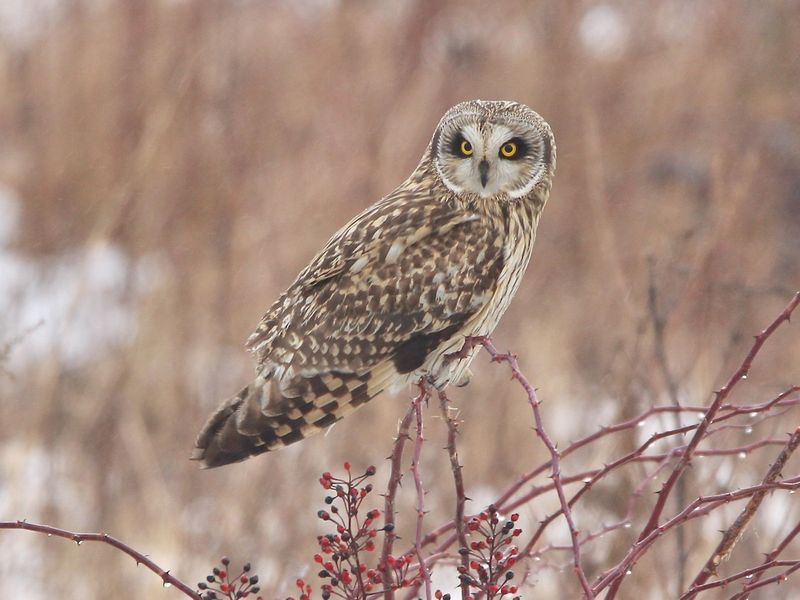
Prairie hunters that break the nocturnal owl stereotype, Short-eared Owls frequently hunt during daylight, especially at dawn and dusk. Their bouncy, moth-like flight pattern is instantly recognizable as they quarter low over grasslands searching for voles and mice.
These ground-nesters create simple scrapes hidden among tall grasses. Unlike most owls, they’re highly migratory, with some individuals traveling thousands of miles between breeding and wintering grounds across North America.
8. Eastern Screech Owl (Megascops Asio)
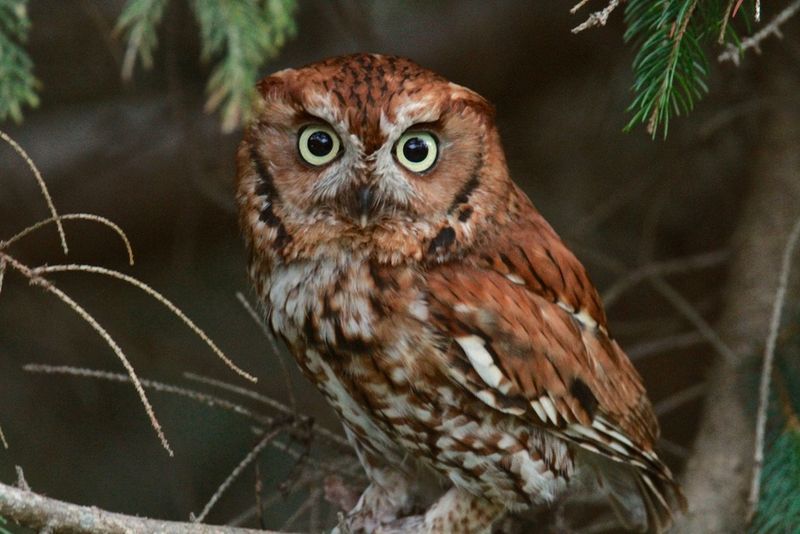
Suburban survivors with voices that don’t actually screech, these small owls produce eerie, descending whinnies and soft trills. Eastern Screech Owls come in two distinct color morphs – rusty red or silvery gray – with the prevalence of each varying by region.
Masters of camouflage, they freeze against tree trunks, becoming nearly invisible. Despite their diminutive size, these fierce hunters tackle prey as large as rabbits and have adapted remarkably well to human environments, nesting in backyard boxes and city parks.
9. Western Screech Owl (Megascops Kennicottii)
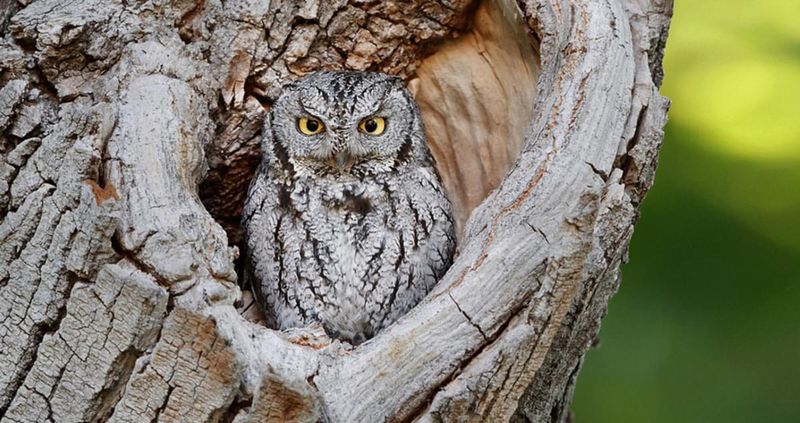
Charismatic desert dwellers with bouncing ball-like calls, Western Screech Owls are slightly stockier than their eastern cousins. These adaptable hunters thrive in diverse habitats from cactus-studded deserts to mountain forests throughout western North America.
Fiercely territorial year-round, pairs maintain the same nesting site for years. Their varied diet includes everything from insects and scorpions to small birds and pocket gophers, with some coastal populations even specializing in catching small crabs from tidal pools!
10. Northern Saw-Whet Owl (Aegolius Acadicus)
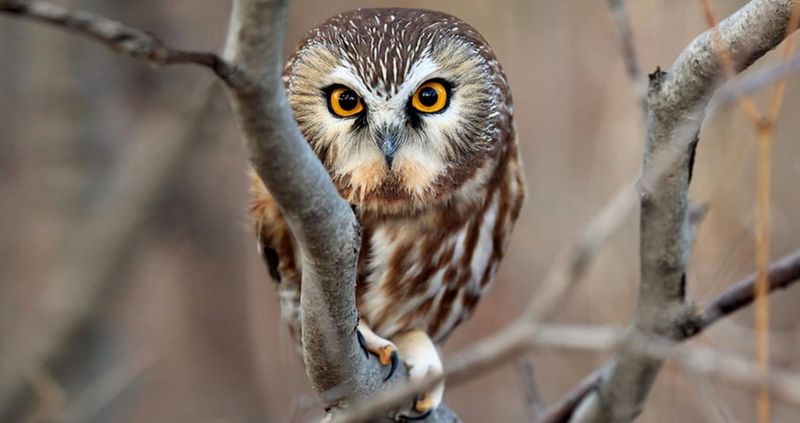
Pocket-sized predators with oversized personalities, Northern Saw-whet Owls weigh less than a baseball but hunt with remarkable efficiency. Their name comes from their repetitive tooting call that early settlers thought resembled the sound of sharpening a saw on a whetstone.
These tiny hunters have asymmetrical ear openings that create a three-dimensional sound map in their brain. Though rarely seen due to their nocturnal habits and small size, researchers have discovered they’re far more common than previously thought throughout North America’s forests.
11. Elf Owl (Micrathene Whitneyi)
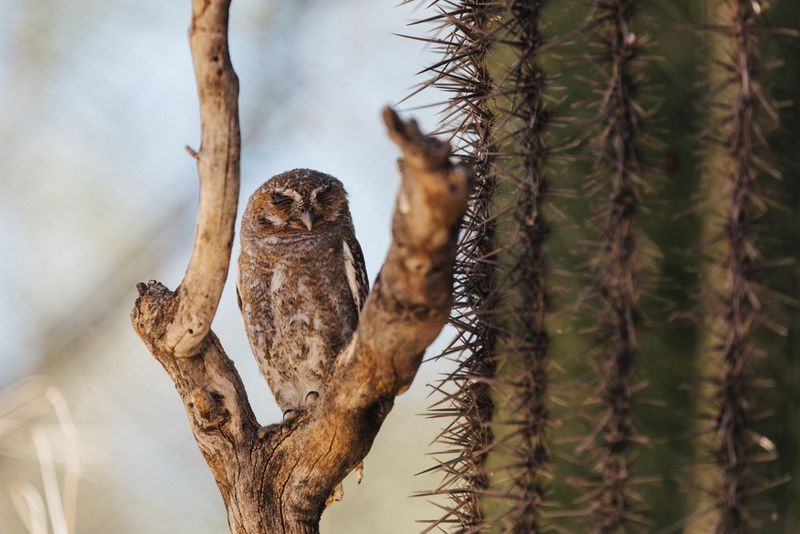
Feathered sprites of the desert, Elf Owls claim the title of world’s smallest owl – barely larger than a sparrow. Despite their tiny stature, these fierce little hunters capture scorpions, disabling them by removing the venomous tail before consumption.
Saguaro cacti serve as their preferred nesting sites, using abandoned woodpecker holes as ready-made apartments. Their high-pitched chuckling calls echo through desert nights during spring breeding season, but most migrate to Mexico for winter months.
12. Burrowing Owl (Athene Cunicularia)
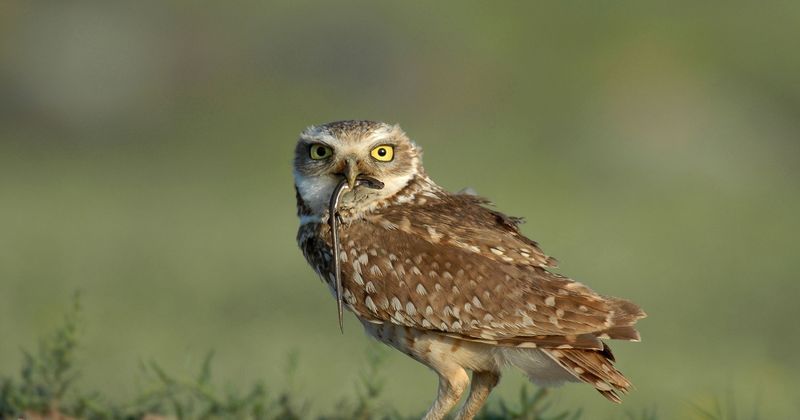
Ground-dwelling oddities that break every owl stereotype, Burrowing Owls live underground in prairie dog towns and other borrowed burrows. Unlike their night-loving relatives, these long-legged owls are often active during daylight hours, standing sentinel beside their burrow entrances.
They collect mammal dung to line their underground nests, attracting dung beetles which become convenient snacks. Western populations have developed a fascinating hunting technique – they’ll collect and store shiny objects to attract insects, essentially creating their own bait!
13. Northern Pygmy Owl (Glaucidium Californicum)
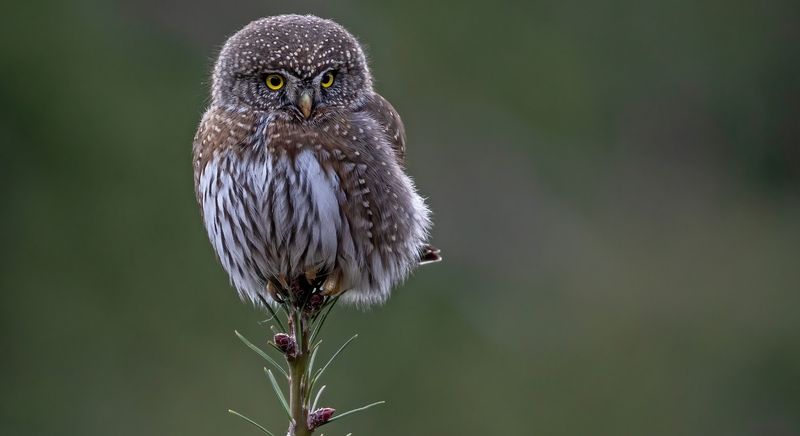
Daytime hunters with a bold attitude, Northern Pygmy Owls fearlessly attack birds larger than themselves. Their most distinctive feature is the pair of false eye spots on the back of their head, believed to confuse potential predators or mobbing birds.
Despite being barely larger than a sparrow, these fierce micro-predators can take down birds twice their size. They store excess prey in tree cavities, creating caches for leaner times. Listen for their rhythmic tooting calls in western mountain forests, where they’re active primarily during daylight hours.


